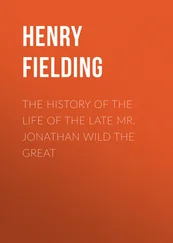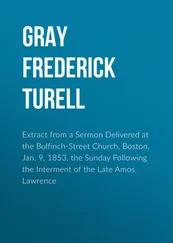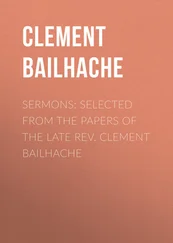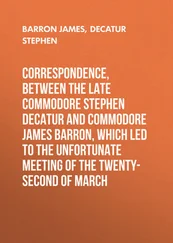There was definite truth to that. When I play with the orchestra, I play the parts I know and skip the parts I don’t. Sometimes that means an entire piece. I just sit it out. The better players, like Joe, play every note.
“A lot of people,” he said, “were playing ‘air cello,’ moving the bow back and forth but never engaging the string. It looks like you are playing the cello but you’re not. I am!”
Joe wasn’t exactly angry. He just thought it wasn’t fair. After all, he practiced and practiced. He spoke about going over one passage eight thousand times — and I don’t think he was exaggerating. I have to admit that sometimes I would show up for rehearsal (after escaping my job, my students, my family, and my editor) and sight-read my way through. I was part of Joe’s problem.
But now Joe was back. His financial situation had improved and he needed the orchestra. “You have to play with others and you have to play for people,” he said.
I told Joe that I was glad to see him again but wondered why he chose LSO when there were many other community orchestras he could join. He admitted to liking something about the spirit of LSO. He enjoyed the repertoire, which included a lot of chamber music and string quartets scored for an orchestra, and he appreciated the democratic and open nature of LSO.
“You don’t have to audition and you don’t have to practice,” he said, echoing Elena’s guidelines. “That’s what makes it so great. And that’s also what makes it so terrible.”
The Late Starters Orchestra approach that I had signed up for was not all that different from the Suzuki method that had worked so brilliantly for Judah. While Suzuki asserts that every child can learn an instrument, the LSO philosophy is that adults can, too, even into middle and old age. Both programs are essentially anti-elitist: good music is not just for the wealthy or the supertalented; it is within everyone’s reach. And many of the same behavioral initiations are there: immerse yourself in the music, learn music as you would a language, surround yourself with it and hang out with others who are learning. A chief difference between the two systems is that we late starters do not have parents who take us to lessons, pay for them, remind us to practice, and cheer us on.
In Suzuki, children are praised at every step — and rightly so. A child’s slow, steady mastery of his or her instrument is nothing short of remarkable. When Judah was little — and here I mean six, seven, and eight — we pulled out the cello nearly every time a guest came over. He’d play “Twinkle, Twinkle” and later a straightforward Bach minuet, and the crowd would go crazy. Family and friends seemed to love it, and whether sincere or not, their applause gave Judah a sense of accomplishment and confidence. One of the first lessons that children learn in Suzuki is how to take a graceful bow and Judah used his often.
But no one is going to rise to their feet after hearing an adult play “Twinkle” or a familiar minuet. More often their reaction is: “That’s it? That’s what you are spending your time doing? That’s what you learned in six months?” But “Twinkle” we must. At any age, music is learned in minute, deliberate steps. And, while we late starters bring a lot to the table in terms of life experience, intelligence, and motivation, we recognize that we can never recapture the plasticity of mind and the luxury of time that comes only in youth. Youth can achieve mastery; the most we can hope for is competence. In his best-selling book Outliers Malcolm Gladwell writes that there is no secret to greatness: in a word, it comes from repetition. “Ten thousand hours” is his mantra.
Gladwell argues that everyone — from top hockey players to Olympic ice skaters to world-class chess players to master safe crackers to successful computer geeks to prima ballerinas — put in their ten thousand. Gladwell was criticized for being simplistic on this score when his book came out in 2008. There are, his detractors argue, certainly such factors as talent, health, genetics, environment, economics, parents, and teachers. All of these contribute to greatness, not just slavish practice.
But practice has its virtues. The ten-thousand-hour theory was first advanced by the cognitive psychologist K. Anders Ericsson of Florida State University, who initially studied just what it is that makes a great musician. Ericsson and two colleagues followed violin students at Berlin’s Academy of Music. The violinists were grouped into three categories: those who were merely “good,” those who were likely to play in professional orchestras, and those who had the potential to become world-class soloists. All of them, the researchers found, started playing at around the age of five. “In those first few years,” Gladwell writes of Ericsson’s study, “everyone practiced roughly the same amount, about two or three hours a week. But when the students were around the age of eight, real differences started to emerge.”
Some maintained their steady two or three hours, but others ratcheted it up year by year until they were practicing more than thirty hours a week by the time they were in their early twenties. The study of these three groups found that the more a student practiced, the greater their chance of being a world-class musician.
“Elite performance,” Anders and his colleagues wrote in 1993 in the Psychological Review, the journal of the American Psychological Association, is “the product of a decade or more of maximal efforts to improve performance in a domain through an optimal distribution of deliberate practice.”
In Outliers, Gladwell popularizes this as: “Ten thousand hours is the magic number of greatness.” Without it, he says, there is none.
I read this and shudder. I ask: Who at my age has ten thousand hours?
The answer, of course, is no one. But then the goal of the late starter is not to be a virtuoso or prodigy (too late for that), but to be competent. And recent advances in brain science put competence clearly within reach of late starters. As Dr. Doidge explains in The Brain That Changes Itself, the science of neuroplasticity is overturning the notion that the human brain, developed in childhood, is fixed for life. Doidge documents the work of a group of physicians and researchers he calls the “neuroplasticians,” who “rewire” the brain through behavioral changes and without surgery. He tells of people who are able to move paralyzed limbs or restore vision to blinded eyes because of neuroplasticity. “I met people whose learning disorders were cured and whose IQs were raised,” he writes. “I saw people rewire their brains with their thoughts, to cure previously incurable obsessions and traumas.”
Examples abound of people late in life not only recovering from handicaps but achieving great things. Golda Meir did not become prime minister of Israel until she was seventy. Noah Webster was sixty-nine when he first published his famous dictionary, and Peter Mark Roget was seventy-three when he published the first edition of his famous thesaurus. Benjamin Franklin was seventy-eight when he invented bifocals, and Frank Lloyd Wright was ninety when he designed the Guggenheim Museum.
It may be too late for late starters to develop the neurons that form extra brain mass in the brains of young musicians, but certainly new pathways into the brain can be created. New skills can be learned. And new instruments played competently if not with mastery, opening up whole new vistas of achievement and enjoyment. And that is what keeps me going.
The East London Late Starters Orchestra
The group of parents who started ELLSO in 1982 was led by a civil engineer with no musical background named Chris Shurety.
Читать дальше












